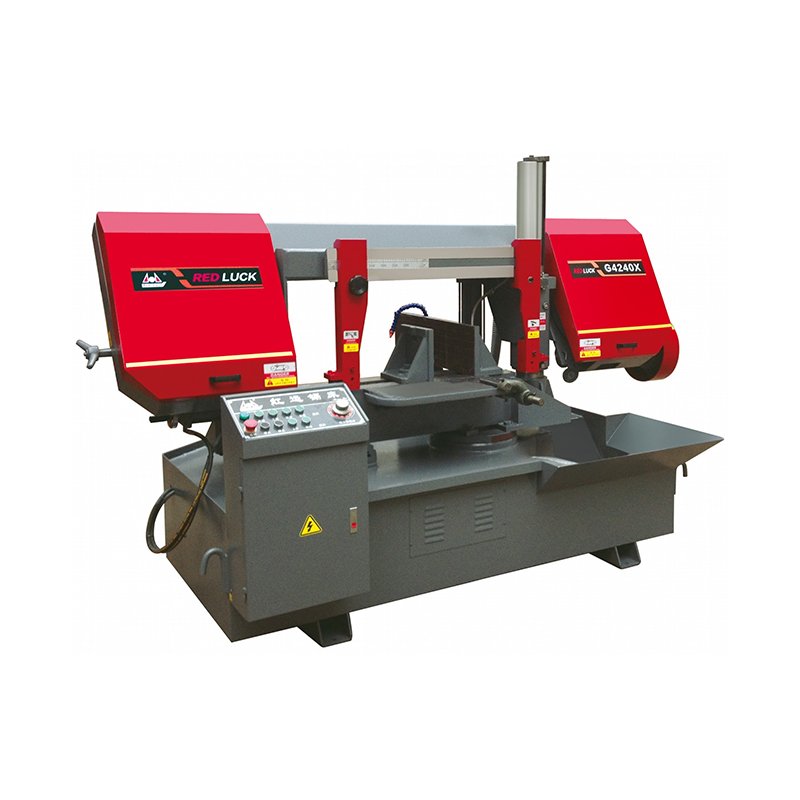Gantry Horizontal Metal Band Saw: Exploring the Role of CNC and Automated Systems
The core function of a Gantry Horizontal Metal Band Saw remains metal cutting, yet modern iterations of this equipment have evolved well beyond this fundamental task. The integration of Computer Numerical Control (CNC) and automated subsystems is reshaping how workshops approach cutting operations with the Gantry Horizontal Metal Band Saw. It shifts from heavy reliance on manual work to more streamlined, managed production processes. This article explores how these technological advancements elevate the efficiency and consistency of the Gantry Horizontal Metal Band Saw, optimizing its performance in various metal cutting environments.

The Fusion of CNC and Gantry Band Saw Technology
CNC systems serve as the "brain" of modern gantry horizontal metal band saws, translating digital instructions into precise mechanical movements. Unlike traditional manual operation, where operators must constantly monitor and adjust the machine, CNC integration allows for pre-programmed sequences that guide every stage of the cutting process. This shift not only reduces the potential for human error but also creates a foundation for seamless integration with other automated components. Gantry-style designs, with their stable overhead structure and ability to handle large or long workpieces, pair particularly well with CNC technology—creating a synergy that boosts both capacity and accuracy in metal cutting tasks.
Key Automated Functions in Modern Gantry Band Saws
Automation in gantry band saws is not a single feature but a set of coordinated systems working together to handle tasks beyond the actual cutting action, simplifying workflows and improving output quality.
Automated Feeding Mechanisms: These systems are responsible for moving raw materials—such as long metal bars or pipes—into the correct cutting position. By eliminating the need for manual material positioning, they support continuous operation, even when processing large batches. Many feeding systems can handle multiple cut sequences without frequent operator intervention, ensuring that the machine maintains a steady pace throughout production runs.
Accurate Length Control: Leveraging feedback sensors and precision measuring devices, automated gantry saws can position materials with consistent accuracy for each cut. This level of control is crucial for maintaining tight length tolerances across an entire batch of workpieces, reducing waste from incorrect cuts and ensuring that finished parts meet required specifications without the need for time-consuming manual measurements.
Programmable Parameter Management: CNC systems enable operators to store and retrieve custom cutting programs tailored to different materials, thicknesses, and cut types. These programs set critical parameters like blade speed, feed rate, and cutting pressure—ensuring that the optimal cutting technique is applied consistently, regardless of the operator. This not only simplifies setup for repeat jobs but also helps maintain uniformity in output, even when different operators are involved.
Operational Workflow: From Setup to Completion
The integration of CNC and automation transforms the entire cutting workflow, making it more efficient and less labor-intensive.
Setup and Programming: The initial setup involves selecting or creating a pre-programmed cutting sequence and loading the raw material onto the machine. While this step requires some operator input, it is a one-time process for repeat jobs. Once programmed, the machine can replicate the same sequence accurately every time, eliminating the need for reconfiguration between batches.
Autonomous Cutting Cycles: Once started, the machine operates independently through the entire cycle—clamping the material securely, initiating the cut, adjusting speed and feed rate as needed, and indexing to the next position for subsequent cuts. This autonomy frees up operators to focus on other tasks within the work cell, such as inspecting finished parts, deburring edges, or preparing the next set of materials, thereby maximizing overall shop productivity.
Integrated Material Handling: Many modern gantry band saws can be connected to conveyors, robotic arms, or other material handling systems. This integration extends automation further by automating the loading of raw materials and the unloading of finished parts, reducing manual lifting and handling and creating a continuous, seamless production line.
The Broader Impact of Automation
Beyond immediate gains in productivity and accuracy, automation brings other significant benefits to metal cutting facilities. Handling repetitive, labor-intensive tasks reduces the physical strain on operators, contributing to a more comfortable and sustainable work environment over long shifts. Additionally, the consistent, predictable output from automated systems simplifies inventory management and downstream processes, as sh

 English
English 中文简体
中文简体 русский
русский

